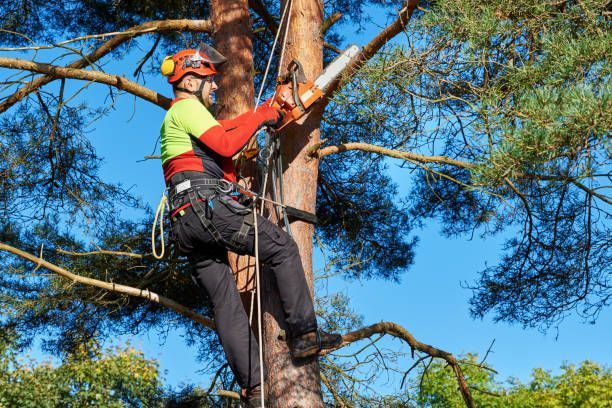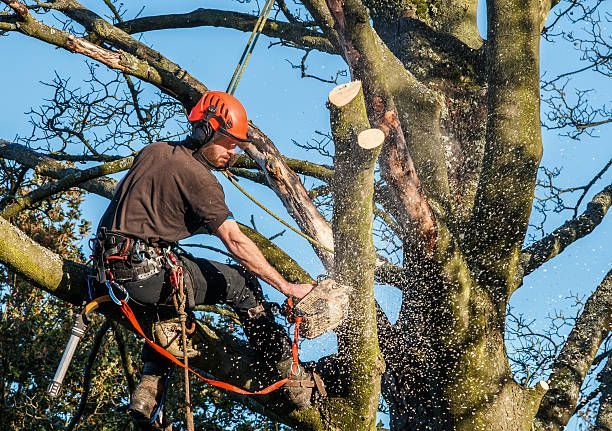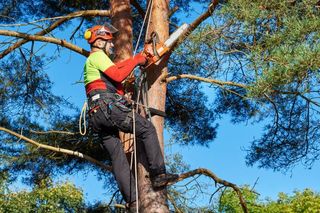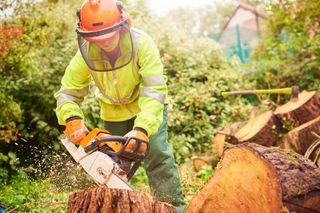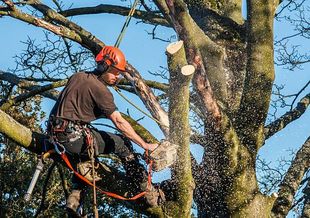Stumped Tree Solutions
A team of professional arborists and tradesmen committed to servicing the Greater Western Sydney region for all tree-related needs.
A bunch of certified arborists and seasoned tree fellers from across the area who are committed to helping property owners deal with those hard to deal with plants in your yard, your trees. While we would be more than happy to deal with the trees, our main goal with this website is to educate you our dear potential customers about how tree services work. Yes, there are things that you as a homeowner or tenant must do, or at least consider before you can have your trees serviced. So please, take the time to read through the condensed explanations we've left below to learn about the often overlooked aspects of tree management which can help save you money, but more importantly your time.
Need Help ASAP? Tell us about it by dialling 025-941-6414
Free Quote!
Contact Us

Hazard Assessment
Planning a construction project? You've been audited/inspected and need to comply with local council regulations? Or you just have that inkling something will go wrong if that tree doesn't get checked on? Worry not, our certified arborists can inspect your trees, and guide you to the right decision.

Tree Trimming / Shaping
More so for the aesthetics, tree trimming is the process of selectively cutting dead, diseased, damaged, or overgrown branches to shape your tree into the tree it was meant to become.

Arborist Report
Typically required for commercial properties/spaces, arborist reports is a report that evaluates a trees health. This is important during property development, management of public spaces, or dispute resolutions. In some cases, a removal permit may be required from your local council.
Tree Services in Western Sydney Explained
KEY TERMS
Key Terms:
Trunk: main body of tree that extends from the ground.
Branch: a section of the tree that extends out from the tree’s trunk.
Crown: refers to the entire section of branches that sprout leaves.
Crown: the section of the tree that contains branches
Canopy: from a birds eye view above the tree, it is the section of branches and leaves that provides shade to the ground (essentially the top of the crown).
Tree trimming: generic umbrella term for cutting sections of a tree.
Vista: a view through a narrow passage, such as between trees or houses
Stump: The remaining trunk of the tree left after your tree has been cut.
Local Environment Plans (LEPs): Statutory document by a local council guiding land use and development, including provisions for tree and vegetation management.
Tree Preservation Orders (TPOs): Legal mechanism implemented by local councils to protect specific trees or vegetation, requiring permits for tree-related activities.
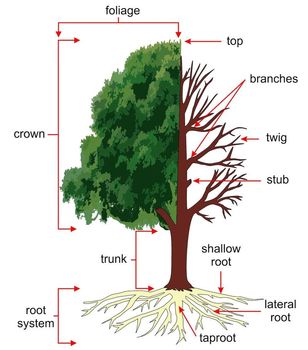
Tree Trimming
What is Tree Trimming?
Tree trimming is the generic term that encompasses the alteration of your tree’s shape by cutting off specific branches or sections. The main types of tree trimming methods include tree pruning and tree lopping. Tree pruning involves the selective removal of branches to improve your tree’s structural health, and appearance. This is arguably more conservative and healthier approach when compared to tree lopping. Tree lopping involves cutting off main branches. When compared to tree pruning, lopping a tree is a more aggressive approach that can lead to tree disease, reduce overall structural strength and visual appeal.
Tree Pruning Methods:
- Crown Thinning: Removal of thin branches of the crown. This is to promote air circulation throughout the tree, light penetration and reduce wind resistance.
- Crown Raising: Cutting branches towards the bottom of the crown which essentially raises the starting point of the crown. These changes are typically for clearance purposes, enabling pedestrians, vehicles or structures below the tree to pass easily.
- Crown Reduction: Removal of branches along the canopy of the tree. Typically done for overgrown tree extending beyond its boundary.
- Deadwooding: Yes, trees are living things and they too can have dead, dying or diseased branches that are not good for their health. This method removes these kinds of branches so that your tree sustains its health.
- Vista Pruning: This method involves the removal of branches that obstruct desired vistas. Typically, this method is undertaken for visibility and subsequent safety precautions, but also for aesthetic purposes as desired by you our clients.
Tree Lopping Methods:
- Topping/Cutting: removal of entire sections of your tree’s crown. This is undertaken despite being a detriment to the tree in emergency situations where complications can arise from not doing so. For example, damage to property, or nearby powerlines.
- Pollarding: cutting off a majority of the tree’s branches leaving only the main branches or trunk. These extreme measures are taken on specific trees that respond well to this method, however strict maintenance is required to promote correct regrowth of branches.
Tree Removal
What is Tree Removal?
Tree removal is the process of removing the canopy of tree and substantial amount of the trunk. Removal of the leftover stump may incur extra cost.
Most overlooked consideration homeowners make when they require tree services:
Rules across the state vary - depending on where you live, each local government area council have their own set of LEPs and TPOs. These rules essentially determine whether your tree can be removed based off things such as its dimensions , whether it is a native Australian plant species that is classified as a protected species, if the tree is situated on heritage land, and many other guiding rules.
See the guides down below that take you step by step on how processes behind tree services work. The guides vary depending on the type of property you occupy, or the type of land the tree is situated on.
Stump Removal
What is Stump Removal?
Stump removal is the process of removing the base of the trunk that is left over after a tree has been cut down. There are various methods that can be used to remove a stump. The primary factors which help determine the best method to use include the size of the tree and accessibility to the tree based on where it is situated on site. The common removal techniques we use here in Australia are, but not limited to the following:
Stump Removal Methods:
Stump Excavation: For smaller trees it is possible to dig out the entire stump of the tree. This is done by digging around the stump and removing the main root system anchoring the tree. Once this has been completed the stump is able to be excavated by on of our excavator machines.
Stump Grinding: The process of using a specialised stump removal excavator which will mechanically grind the stump into small chips. Typically, this operation is recommended for larger trees where stump excavation is not feasible.
Chemical Stump Removal: Sometimes referred to as “stump poisoning”, this method involves the usage of specialised chemicals that accelerate the decay and decomposition of the stump and main root system.
Understand this important step to save your time...
The best practice when dealing with your trees is to
contact your local council first. Then, in most cases you will have to
lodge an application to your local council before hiring a local arborist or tree feller to complete your desired tree service. If your application is approved, the council will supply you with a permit. At this point you now have permission from your the local council to have your desired tree service actioned.
Sometimes, the council may also request that you supply an arborist report with your application. This report is to check that the tree you are requesting to be serviced is not a protected tree species, or that the land the tree is situated on land considered a heritage site, and assess the health of the tree(s) in question. Simply put, some trees can be removed while others cannot due to environmental rules and regulations.
For simplicity, we have broken down the process you must follow depending on where the tree in question is located.
How To Submit a Tree Service Request To Your Local Council:
Note - the steps are similar to residential property, with some slight tweaks as the property or land ownership type changes
Residential Land :
- Obtaining a permit - when submitting an application to your local council for approval there may be different sections you will need to fill out.
- Additional Information - property development requires clearing of land which may contain numerous trees. For this reason, an arborist report will more than likely be required.
- Approval process - while usually a more complex and technical process it may take more time until approval is gained by the local council.
Strata Process:
Key Terms:
Strata manager/Owners corporation manager(s)/Strata managing agent/body corporate manager: the individual who has the final say in strata property matters, and is responsible for executing tasks as raised by strata property tenants.
Strata committee/Strata corporation/Owners corporation: selected tenants of strata properties that report and unanimously approve on issues raised by all strata property tenants to the strata manager/owners corporation
- For those unsure whether you occupy a strata property, if you
currently
live in an apartment, townhouse, duplex, commercial complex, or any officially subdivided property with multiple owners and or tenants. Each strata property will have their own set of rules and processes regarding tree removal or alteration. For this reason, it is best to contact your strata manager, or members part of your strata committee to follow the correct processes.
Commercial Land:
- Obtaining a permit - when submitting an application to your local council a different form will be required than the one submitted for residential or commercial tree removal requests.
- Additional Information, an arborist may be required.
- Approval process, turn around time may vary from a few business days to weeks.
- Engaging a Tree Removal Service - If approved, you will need to hire a qualified professional who meets conditions that will be outlined by your local council, and follow any additional rules and processes. For example, the Blacktown City Council stipulates that a qualified arborist with $10 million public liability policy must carry out the removal job. Additionally, any removal must be offset by a fee of $520.00 (GST inclusive) per tree, with the council supplying and planting these new trees.
Government Land:
If the tree resides in non of the above categories, and is situated in out in the public then it is on public grounds that is essentially owned the the local government.
- Obtaining a permit, when submitting an application to your local council a different form will be required than the one submitted for residential or commercial tree removal requests.
- Additional Information, an arborist may be required.
- Approval process, turn around time may vary from a few business days to weeks.
- Engaging a Tree Removal Service - If approved, you will need to hire a qualified professional who meets conditions that will be outlined by your local council, and follow any additional rules and processes. For example, the Blacktown City Council stipulates that a qualified arborist with $10 million public liability policy must carry out the removal job. Additionally, any removal must be offset by a fee of $520.00 (GST inclusive) per tree, with the council supplying and planting these new trees.
Stumped Tree Solutions Customer Journey
Consultation
We'll schedule a consultation with you to discuss your tree-related needs. We'll listen to your concerns, provide expert advice, sprinkling in some hilarious tree-related jokes.
Assessment
Our certified arborists will inspect your trees and determine the best course of action.
Execution
Our fully insured team will expertly complete the service you request.
Follow-Up
After the jobs is done we will clean our mess and be on our way. We'll contact you in the following business days to see if any complications have come up, and to address any concerns you may have, and of course... tell you more tree jokes.
FAQs
Got a question? We’re here to help.
Get Your Free Quote Today!
Contact Us
Contact Us
We're committed to helping you in any way we can.
Leave us a note and we'll get in touch with you shortly.
4 Columbia Ct,
Sydney NSW 2153, Australia
cd.snapps@gmail.com

